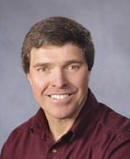 In spite of the fact that chair lifts take you up the mountain, downhill skiing is a very physically demanding activity. The body positions that provide the best combination of balance, stability, control and speed are those that require relatively high levels of muscle strength. In addition to enhanced skiing performance, a strong musculoskeletal system is your best protection against acute and overuse injuries that seem all too common in this sport.
In spite of the fact that chair lifts take you up the mountain, downhill skiing is a very physically demanding activity. The body positions that provide the best combination of balance, stability, control and speed are those that require relatively high levels of muscle strength. In addition to enhanced skiing performance, a strong musculoskeletal system is your best protection against acute and overuse injuries that seem all too common in this sport.
While no one would argue the value of cardiovascular conditioning, aerobic fitness is clearly not the limiting factor in downhill skiing. And though lack of joint flexibility may lead to performance limitations, excessive joint mobility is typically more harmful than helpful. The key to better skiing is greater muscle strength, pure and simple. For overall health and fitness, do your favorite endurance activities and stretching exercises. But for confidence and competence on the black diamond trails, do your strength training.
Downhill skiing is essentially a power activity that emphasizes the anaerobic energy system. Forceful contractions of the quadriceps and hamstrings muscles provide proper body positioning to use the snow and gravity to best advantage. Be thankful for turns, because you can't hold the power position for very long without formidable muscle fatigue. Turns offer both challenge and change of position. The brief unloading phase provides momentary release and relief for the hard-working quadriceps and hamstrings. The turning action also activates the rotational muscles of the midsection and the lateral movement muscles of the thighs. More specifically, smooth turns are closely related to strong external and internal oblique muscles that control midsection rotation, and to strong hip abductor and adductor muscles that shift the hips from side to side.
Although not as important for power production, the muscles of the shoulders, torso, and arms are responsible for effective pole plants, and for safely absorbing impact forces in the event of a fall. Other muscles that serve an essential function in terms of postural support and injury prevention are the low back and neck muscles.
Finally, the anterior tibial muscles of the shin surround and largely control the ankle joint with respect to skiing movements. While modern ski boots reduce the ankle injuries, strong anterior tibial muscles certainly enhance foot action and functional ability for downhill skiing.
Exercise Selection
Based on our downhill skiing needs analyses, the following machine and free-weight exercises are recommended. To ensure muscle balance and lessen injury potential, it is advisable to train opposing muscle groups. For example, you should work both the anterior tibial muscles and the calf muscles for balanced muscle development in the lower leg. Generally speaking it is best to begin with exercises for the larger muscle groups of the legs, and proceed to the smaller muscle groups of the torso, arms, midsection and neck.
Comprehensive Selection of Ski Strengthening Exercises
|
Muscle Group
|
Ski Function
|
Machine Exercise
|
Free-Weight Exercise
|
|
Quadriceps
|
Power position
|
Leg extension
|
Barbell squat
|
|
Hamstrings
|
Power position
|
Leg curl
|
Barbell squat
|
|
Hip Adductors
|
Turns
|
Hip adductor
|
|
|
Hip Abductors
|
Turns
|
Hip abductor
|
|
|
Chest
|
Pole action
|
Chest cross
|
Dumbbell bench press
|
|
Upper Back
|
Pole action
|
Pullover
|
Dumbbell bent row
|
|
Shoulders
|
Pole action
|
Lateral raise
|
Dumbbell press
|
|
Biceps
|
Pole action
|
Biceps
|
Dumbbell curl
|
|
Triceps
|
Pole action
|
Triceps
|
Dumbbell kickback
|
|
Lower Back
|
Poster support
|
Low back
|
Back extension
|
|
Abdominals
|
Posture support
|
Abdominal
|
Trunk curl
|
|
Internal/External
|
Turns
|
Rotary torso
|
Twisting trunk curl
|
|
Obliques
|
Posture support
|
|
|
|
Neck
|
Posture support
|
4-way neck
|
|
|
Anterior Tibials
|
Ankle function
|
|
Toe raises
|
|
Calves
|
Ankle function
|
Calf
|
Heel raises
|